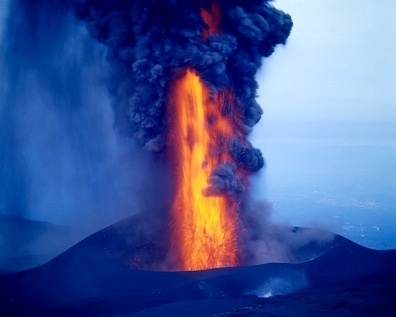What Causes Volcanoes?
Volcanoes are caused by plate tectonics. The entire world is covered in plates that move around due to high pressures underneath them. Depending on the plates, they may rub together resulting in friction or they spread apart resulting in a gap between the two plates. This results in two different types of volcanoes. There are cone-shaped volcanoes, the ones that are similar to mountains, and then there are crack volcanoes, typically only seen under water.
Cone Shaped Volcanoes
A cone shaped volcanoes is formed when two plates start to rub together. As more pressure is applied, there is a  bending that takes place between the two plates. Without notice, one of these plates will suddenly shoot above the other one. This forces the ground to rise up and to form the cone that is so commonly seen in movies and in places such as Mount St. Helens.
bending that takes place between the two plates. Without notice, one of these plates will suddenly shoot above the other one. This forces the ground to rise up and to form the cone that is so commonly seen in movies and in places such as Mount St. Helens.
When the plate rises above the other, the depressed one is exposed to an increased amount of heat. The rock melts and turns into magma. Because of the newly formed gap between the two gaps, this magma rises up until it reaches the top of the volcano. This is called an eruption in which lava flows out of the top of it. It is because of this that entire cities, such as Pompeii, were completely destroyed.
Crack Volcanoes
When two plates begin to spread apart from each other, there is no longer a barrier between them preventing the magma that is underneath from seeping out. Most of the time, these sorts of volcanoes occur underneath the ocean so it is usually not seen. As the magma is released into the ocean, the water cools it immediately forcing the magma to group together. Many islands are the direct cause of crack volcanoes. As the volcanoes continued to release the magma, the island continued to build up until suddenly, it rose out of the water.


Comments - No Responses to “What Causes Volcanoes?”
Sorry but comments are closed at this time.